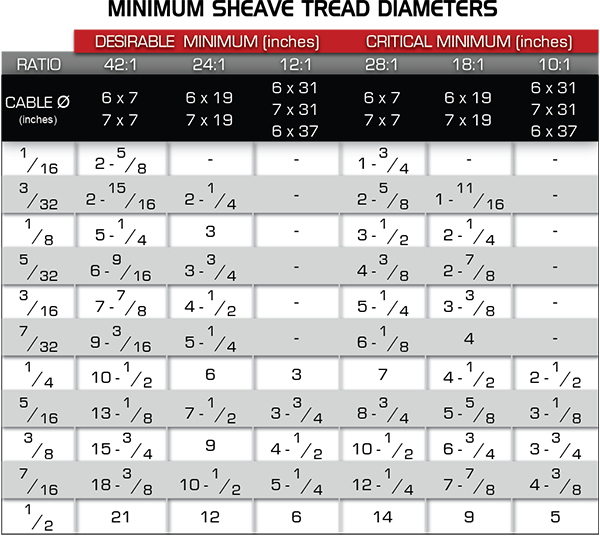While the working of an entire aircraft cable system involves much more than simply picking the proper pulley, understanding aircraft cable performance and longevity in relation to pulley size is very important. This applies especially in critical applications, such as aircraft flight controls, lifting and hoisting systems, and exercise equipment, where unnecessary fatigue and premature failure could result in damage to property, or worse.
The D:d ratio
When designing systems that will use aircraft cables over pulleys, you lessen fatigue and extend service life by choosing the highest possible D:d ratio for yourapplication. What is the D:d ratio? The D:d ratio is a guideline established to assist in maximizing cable life & prevent accelerated failures. The D stands for the diameter of the pulley being used, while the d stands for the diameter of the cable (overall diameter on jacketed aircraft cable). So, the larger the pulley that you design for use with a given cable size, the higher the D:d ratio.
What does the D:d ratio mean? As a general rule, the larger the D:d ratio, the longer the wire rope service life. It’s a method of understanding the relative service life of a cable on a particular diameter pulley when compared with other available diameters. This means that the resulting design guidelines do not provide absolute service life figures, but a gauge of service life relative to other design choices. For example, if a designer chooses to select different operating parameters, such as a smaller pulley, we would expect relative service life reductions. Keep in mind that there are many other forces at play in an aircraft cable and pulley system that can affect fatigue and failure, so testing of your design is a must to determine how all the forces affect fatigue and cable longevity.
We recommend minimum D/d ratios (see the general design guidelines below and on our website) to assist in your design. We understand that in many applications device size and space restrict the size of pulley you can use. In this case be aware that if your system is designed with a lower D:d ratio, as we stated above, you can expect fatigue and failure sooner than if you used a larger pulley or smaller aircraft cable. We would also recommend more frequent inspections to check for signs of fatigue.
If you have questions about aircraft cable system designs involving pulleys, or any other technical aspects of cable systems, please contact a  or contact a product manager for more information. We can work to find the solution that best suits your application needs.
or contact a product manager for more information. We can work to find the solution that best suits your application needs.




